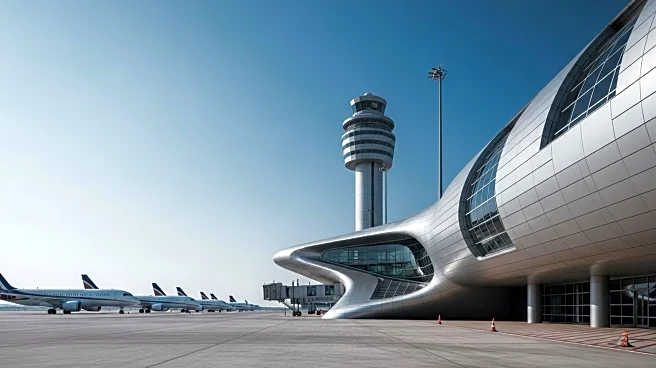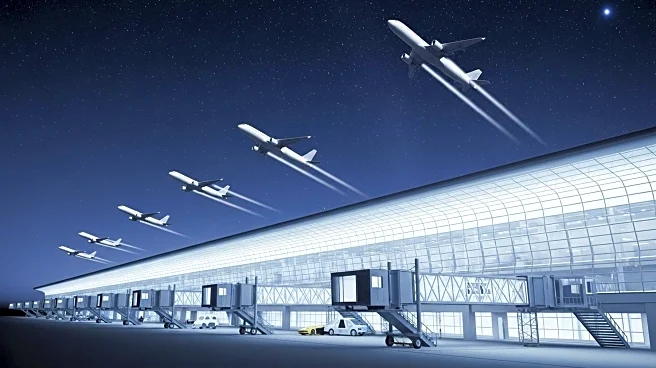What is the story about?
What's Happening?
Airports Council International (ACI) World has projected that global commercial air traffic will reach 9.8 billion passengers in 2025, with expectations to surpass 10 billion in 2026. This growth is uneven across regions, with emerging markets such as Africa, Asia-Pacific, the Middle East, and Latin America driving the increase. These regions benefit from rising demand and the expansion of low-cost carriers. In contrast, mature markets like North America and parts of Europe face challenges due to geopolitical tensions, demographic shifts, and changes in traveler behavior. North America, in particular, is expected to see flat passenger traffic in 2025, with a contraction in the U.S. domestic market. Meanwhile, the Middle East is projected to handle 466 million passengers, a 5.9% increase from the previous year, supported by infrastructure investments and growing tourism.
Why It's Important?
The projected growth in global passenger traffic underscores the recovery and expansion of the aviation industry post-pandemic. Emerging markets are poised to benefit significantly from this growth, potentially boosting their economies through increased tourism and business travel. However, the uneven growth highlights challenges for mature markets, which may face economic and policy-related hurdles. The aviation industry's trajectory will be influenced by infrastructure investments, policy decisions, and resilience to geopolitical and economic uncertainties. Stakeholders in the aviation sector, including airlines, airport operators, and policymakers, must navigate these complexities to capitalize on growth opportunities and mitigate risks.
What's Next?
As global passenger traffic continues to grow, the aviation industry will need to focus on infrastructure development and policy alignment to sustain momentum. The industry must also address regional disparities and external risks, such as geopolitical tensions and economic uncertainties. In the Middle East, the risk of regional escalation could impact airspace access and traveler confidence, potentially affecting traffic performance beyond 2025. Stakeholders will need to monitor these developments closely and adapt strategies to ensure continued growth and stability in the aviation sector.
Beyond the Headlines
The forecasted growth in global passenger traffic may lead to increased environmental concerns, as higher air travel volumes contribute to carbon emissions. The aviation industry will need to balance growth with sustainability initiatives, such as investing in more efficient aircraft and exploring alternative fuels. Additionally, the expansion of low-cost carriers in emerging markets could democratize air travel, making it more accessible to a broader population. However, this may also lead to increased competition and pressure on traditional carriers to innovate and adapt.
AI Generated Content
Do you find this article useful?













